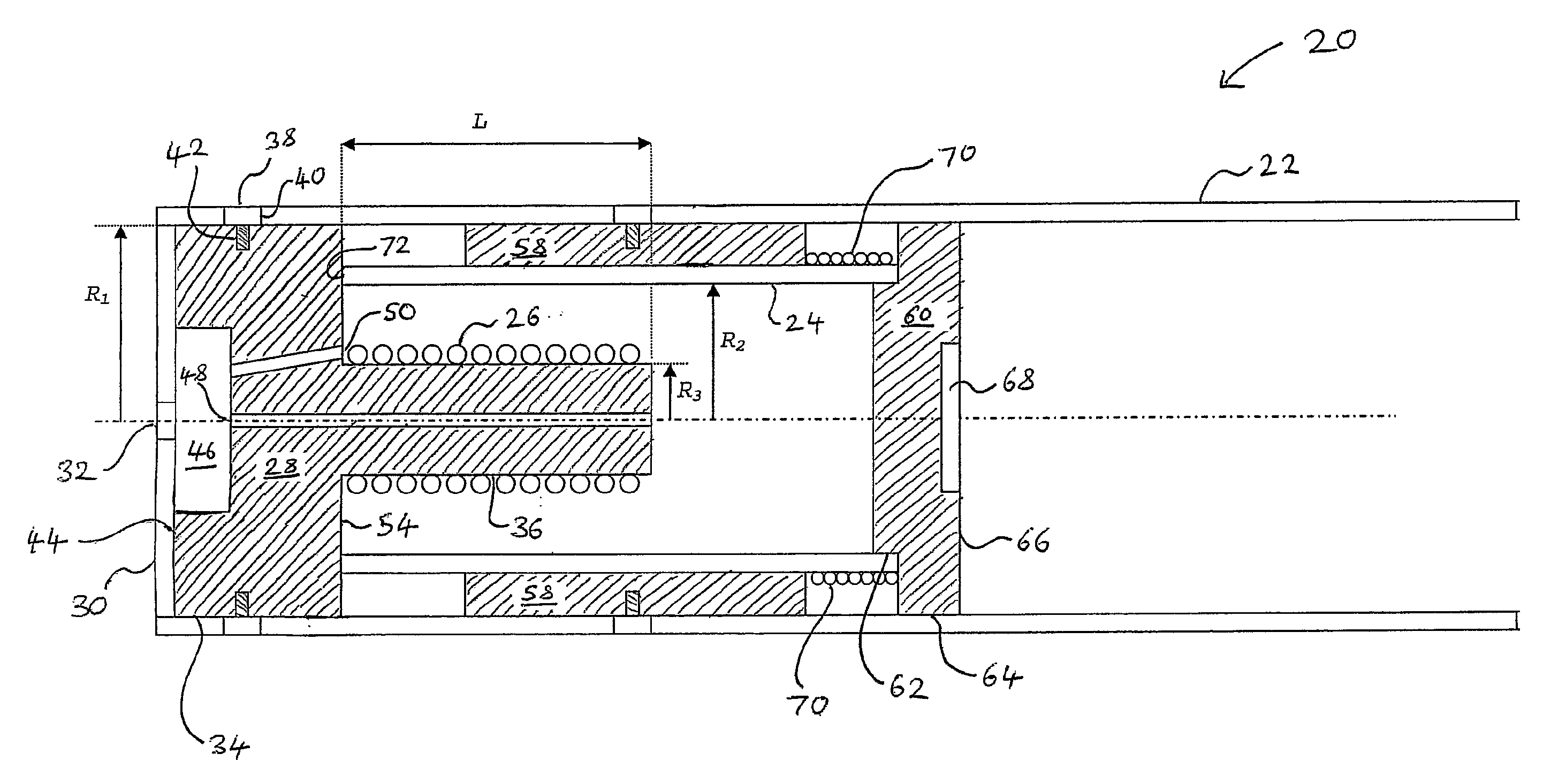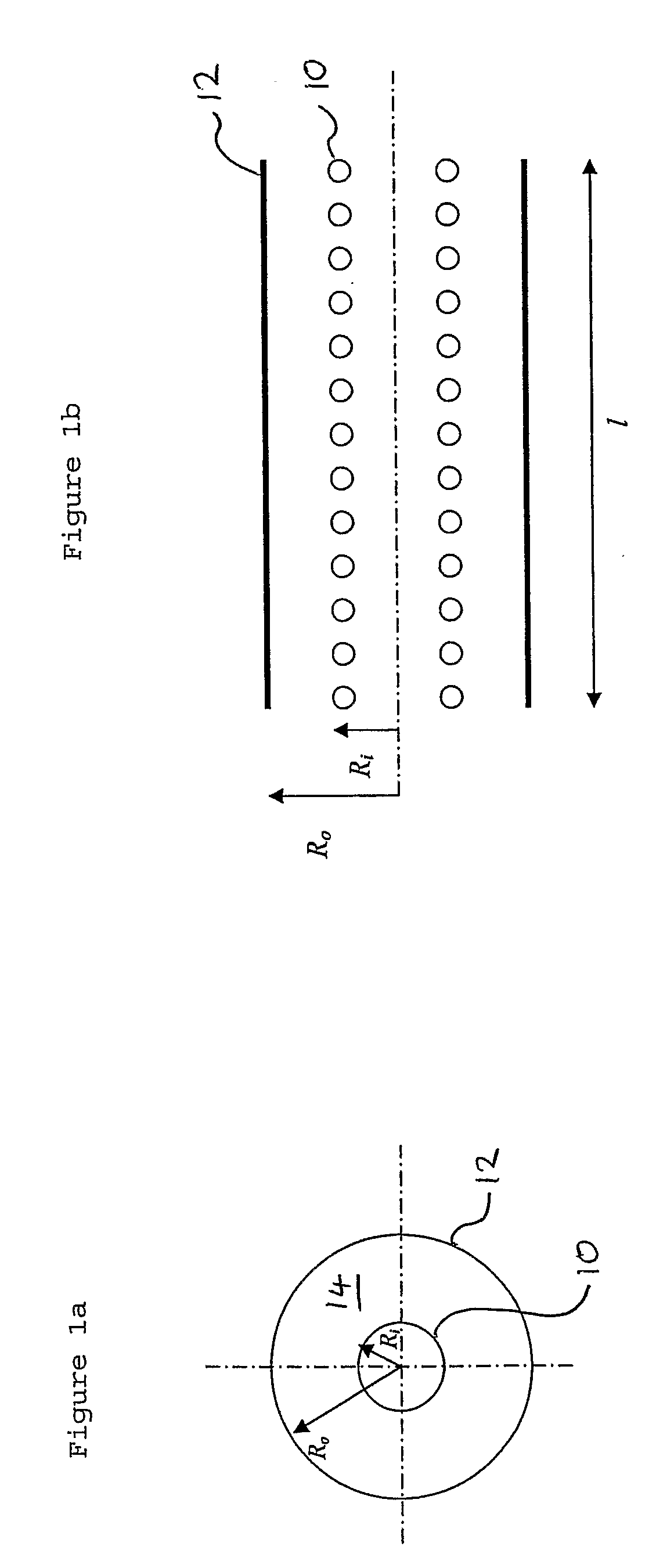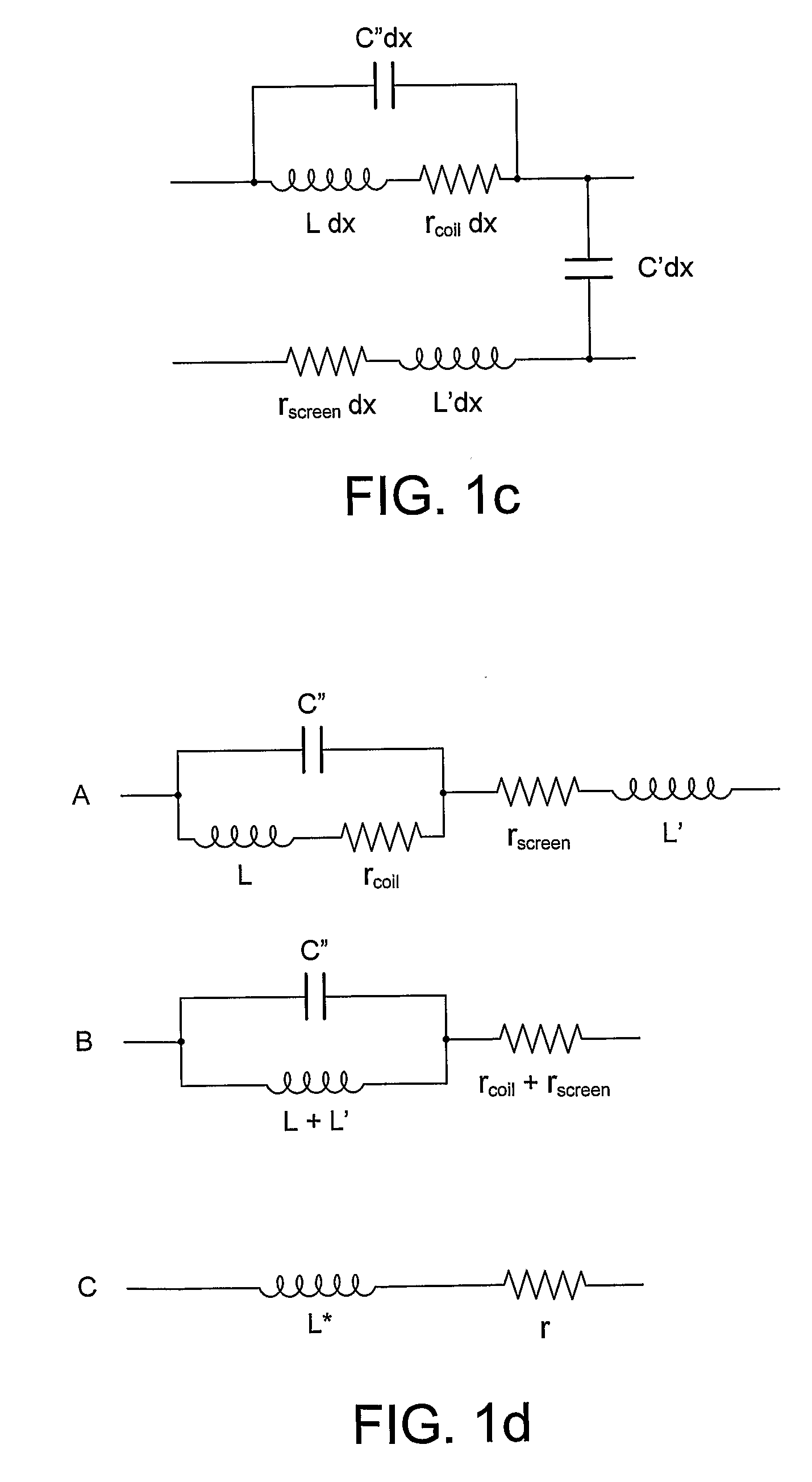Position Sensor
a technology of position sensor and sensor body, which is applied in the direction of electrical/magnetically converting sensor output, electric/magnetic position measurement, instruments, etc., can solve the problems of mechanical vibration, bearing wear, and present sensor is insensitive to system wear, etc., to achieve higher spatial resolution, more robustness, and low cost. easy to manufacture
- Summary
- Abstract
- Description
- Claims
- Application Information
AI Technical Summary
Benefits of technology
Problems solved by technology
Method used
Image
Examples
first embodiment
[0122]In a dual lane position sensor according to the present invention, two coils are interwound. One set of electronics operates both coils alternately. This is achieved by rapid switching between coils by means of a three-position switch. The sequence of operation would be as follows (or similar): coil 1 active, both coils active, coil 2 active. The coils would be perfectly coupled, the output therefore for a given position input is expected to be identical in all three operating regimes. It will be appreciated that any of the linear or angular position sensors described above could be modified to become a dual lane position sensor of this type.
second embodiment
[0123]a dual lane position sensor 200 is shown in FIG. 9. Two coils 202 and 204 are arranged within a screen 206. The screen 206 is symmetrical about a line AA′ in FIG. 9, with each half having a profile similar to that of the tapered screen embodiment of FIG. 3b (so as to obtain a linear response).
[0124]The coils may be set into an insulating rod 208, made of epoxy, for example. Thus, by moving the rod 208, the coils 202 and 204 may be moved axially within the screen 206. An inner surface 210 of the screen 206 is conducting. It may be machined, or injection moulded from plastic; if it is injection moulded, the screen 206 may be metal-plated either on the inside or the outside. Either would result in a satisfactory screen. The two coils 202 and 204 may be operated by separate electronics.
third embodiment
[0125]a dual lane position sensor 210 is shown in FIG. 10. The sensor 210 comprises two independently operating coils 212 and 214 built into a simple dual-lane system. The flux is confined by an outer screen 216 and an inner screen 218. The inner screen 218 is moveable relative to the coils 212 and 214.
PUM
 Login to View More
Login to View More Abstract
Description
Claims
Application Information
 Login to View More
Login to View More - R&D
- Intellectual Property
- Life Sciences
- Materials
- Tech Scout
- Unparalleled Data Quality
- Higher Quality Content
- 60% Fewer Hallucinations
Browse by: Latest US Patents, China's latest patents, Technical Efficacy Thesaurus, Application Domain, Technology Topic, Popular Technical Reports.
© 2025 PatSnap. All rights reserved.Legal|Privacy policy|Modern Slavery Act Transparency Statement|Sitemap|About US| Contact US: help@patsnap.com



